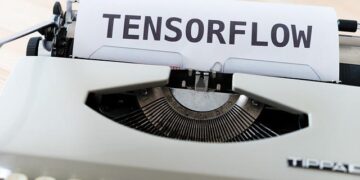New York Mets shortstop Francisco Lindor is off to a slow start to the 2024 season. Despite recording a hit in three consecutive games, he entered Saturday batting .111/.222/.185 (15 OPS+) with one home run and two RBI in his first 13 contests.
How bad has Lindor’s season-opening slump been? According to Baseball Reference’s database, his .407 OPS is tied for the eighth lowest over any 13-game span in his career — and most of those that were worse came in 2016, his first full big-league season.
Mets fans tried to change Lindor’s fortune on Friday night, giving him a standing ovation ahead of his first at-bat against the Kansas City Royals. The crowd’s gesture may not have ignited Lindor’s bat, but it seemed to have improved his mood. “I wasn’t expecting that at all,” he told reporters after the game. “But it definitely felt good. It feels good to be able to come home and feel the love of the fans, when I’m playing well or playing bad. It fills my heart, for sure.”
Should the Mets be concerned about Lindor’s slow start? We believe we’ve highlighted a few statistics that suggest the answer is no.
1. Hard outs
There’s this concept in baseball analysis called regression to the mean that you’ve likely seen applied whenever a player is performing in an extremely good or poor manner. If we had to guess, it gets applied most often with respect to a player’s batting average on balls in play. Whether someone is hitting .100 or .500 when they put the ball in play, the odds are against them maintaining that kind of outlier performance.
A certain kind of reader would find it satisfying if we cited Lindor’s .104 BABIP and concluded that he’s due for a turnaround. Not all batted balls are created equal, after all. Some are well-struck and deserve to be hits; others are not and don’t. Thankfully, we live in the ball-tracking era and we don’t have to resort to 2008-era tactics.
Indeed, there are better methods available to us: like this TruMedia metric called “hard outs.” In short, it’s an attempt at gauging how many outs a batter compiled that probably should’ve been hits based on the batted ball’s exit velocity (95 mph or harder) and launch angle (between 3 and 45 degrees). It’s not a perfect metric, but it’s more illustrative — and presumably, on some level, more predictive — than BABIP alone.
With that in mind, it’s worth noting that Lindor ranks second in the majors with 10 hard outs. The only batter with worse luck (if you’re willing to call it that) is Astros outfielder Kyle Tucker, who has 11 hard outs. No other player has more than nine.
What does a hard out look like? Well, there’s this Lindor line drive that required an acrobatic (and, we think, fortuitous) grab to snag. There’s this scorcher that caught the infielder more than the infielder caught it. And there’s this well-struck ground ball that easily could’ve ricocheted off the glove at a slightly different angle and resulted in a hit.
Those are only three of Lindor’s 10 hard outs. If they had each turned into hits — not a difficult thing to imagine — and everything else remained the same, his average would be 56 points higher. He still wouldn’t be having a great start to the year, but it goes to show how dire his luck has been thus far and how small of a sample we’re dealing with when someone’s average can improve that much with a few better outcomes.
2. Whiff and chase rates
Longtime big-league skipper Joe Maddon used to express the belief that one needn’t worry about a slump until the player starts to change who they are as a hitter. Oftentimes, that manifests in the form of swinging at bad pitches, which makes matters worse by accumulating in the form of whiffs and/or poorly struck balls.
Lindor, we’re happy to report, does not appear to be in desperation mode. Coming into Saturday’s game, he’s actually swinging and missing just 16.4% of the time, or what would be the lowest rate of his Mets career. He’s chasing outside of the strike zone 21.5% of the time, which would also be the lowest of his Mets career. Take a look:
2021
23.2%
26%
2022
22.9%
22.9%
2023
22.8%
22.8%
2024
16.4%
21.5%
If you wanted to play devil’s advocate, you could argue it’s not always a good thing for a batter to improve upon their whiff and chase rates. Sometimes, it’s beneficial to swing and miss rather than make contact, especially if the batter in question is reducing the loft in their swing and minimizing their chances of doing serious damage. Likewise, a batter can improve their chase rate by simply never swinging at all.
There’s no easy way to quantify the former concern, but to the latter, we’ll note that Lindor is swinging at 47.2% of the pitches he’s seen overall. He’s offered at between 47% and 48% of all pitches in each of his first three seasons with the Mets. Based on what we know about his chase rate, that means he’s actually swinging at more strikes. That, on the whole, seems like a positive development for Lindor and his game.
Conclusion
So, what exactly is causing Lindor’s slump? Some of it is clearly bad luck. Most of it, we suspect, is a timing issue. You can tease that out in his ball-tracking metrics. He’s hitting the ball a touch weaker than he did in past years, but the real difference can be found in his spray or the trajectory the ball is taking off of his bat.
Whereas Lindor reliably hit the ball between 10 and 30 degrees 27% of the time or better in his first three seasons with the Mets, he’s hit it in that window just 14.6% of the time so far. In layman’s terms, that means Lindor isn’t lining the ball as often; he’s instead hitting the ball too steeply, either up into the air or down into the dirt.
If those developments stuck for a prolonged period, we might become worried that it’s a sign of injury, mechanical flaw, and/or skill decay. In Lindor’s case, we think there are enough positive indicators present to think it’s a momentary issue he’ll get sorted out in short order.
>>> Read full article>>>
Copyright for syndicated content belongs to the linked Source : CBS Sports – https://www.cbssports.com/mlb/news/francisco-lindor-slump-why-mets-shouldnt-be-too-concerned-about-star-shortstops-early-struggles/































